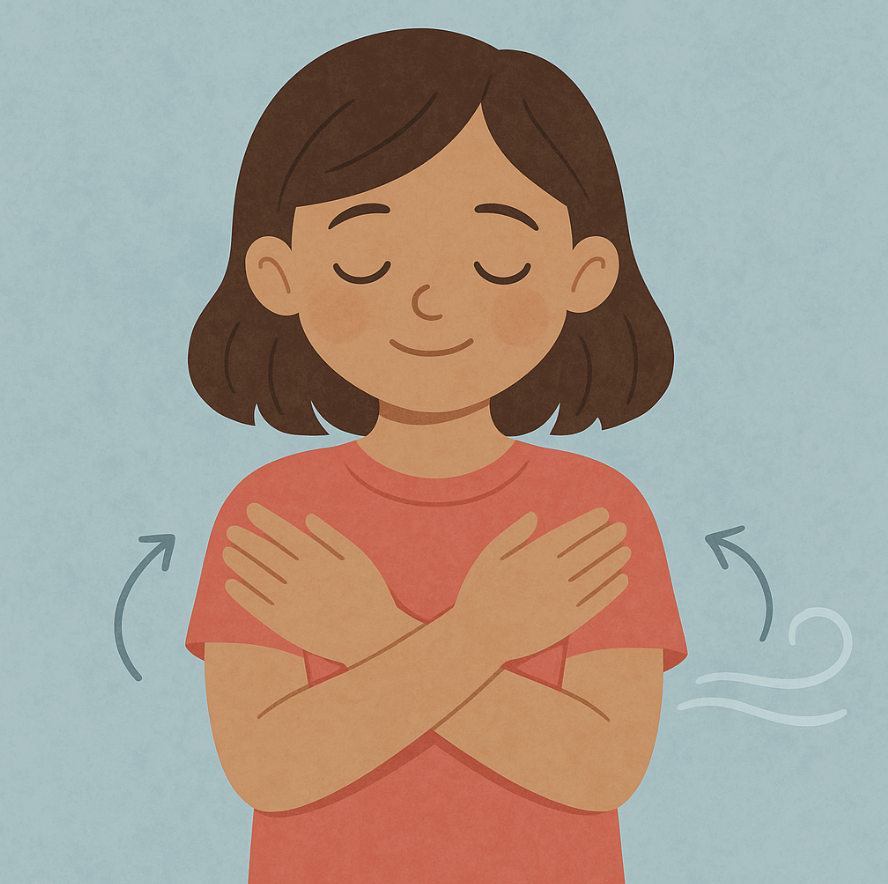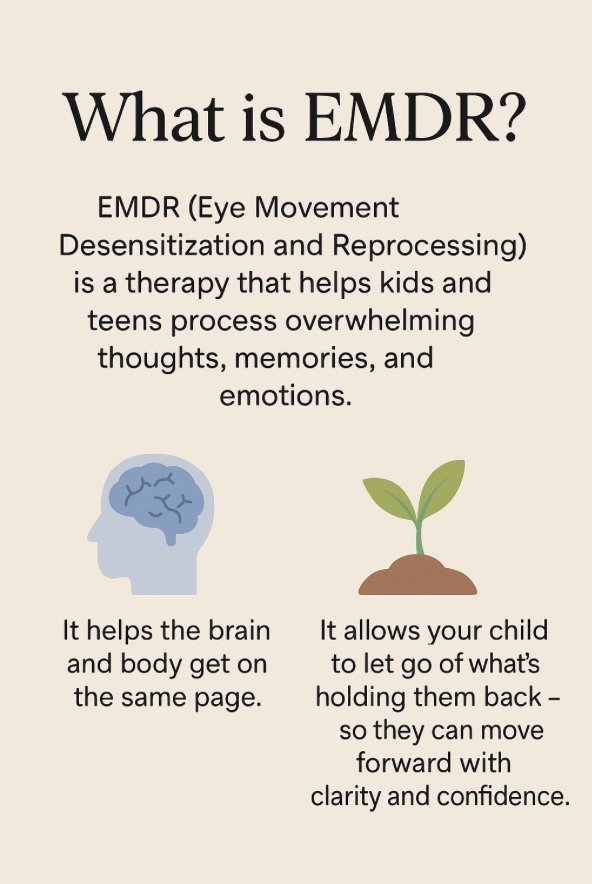How Bilateral Stimulation in EMDR Helps Kids Manage Anxiety
When your child is stuck in a cycle of worry, panic, or fear, it’s easy to feel helpless. You may have tried talking it through, offering reassurance, or teaching calming strategies—but the anxiety still lingers. That’s where EMDR can help.
EMDR (Eye Movement Desensitization and Reprocessing) is a powerful, evidence-based therapy designed to help the brain process distressing thoughts, memories, and emotions. The main process of EMDR is implimenting bilateral stimulation—a simple but incredibly effective tool that helps kids feel safer, calmer, and more in control.
Let’s break down what bilateral stimulation is, how it works in therapy for anxious children, and why it might be exactly what your child needs.
What Is Bilateral Stimulation (BLS) in EMDR?
Bilateral stimulation refers to rhythmic, back-and-forth sensory input—such as eye movements, tapping, or sound tones—that alternates between the left and right sides of the body.
Imagine your brain is stuck in a traffic jam of anxious thoughts. Bilateral stimulation acts like a green light—helping the brain get unstuck and move forward again.
In EMDR sessions, this can be done through:
Side-to-side eye movements (using a light bar or the therapist’s hand)
Alternating hand buzzers
Tapping on the child’s hands or knees
Rhythmic sounds through headphones
For the younger kids, I also like to implement drawing, playing bongos, and a balance board! It’s safe, non-invasive, and actually mimics how the brain processes information during REM sleep (when dreams happen and memories get “filed”).
Why Bilateral Stimulation Works So Well for Kids With Anxiety
Kids with anxiety often feel trapped in fear-based patterns. Their bodies feel tense, their thoughts race, and their reactions can feel out of proportion. That’s because anxiety hijacks the nervous system—and logic can’t override it.
Bilateral stimulation helps the nervous system calm down, so the brain can think clearly again.
Here’s how it helps:
It reduces the emotional “charge” tied to scary thoughts or past events.
It allows the brain to reprocess anxiety in a safe, supported way.
It promotes body-based regulation, which is crucial for children who may not have the words to express what they’re feeling.
It helps kids connect their past experiences (like bullying or a scary separation) with their present reality—where they are safe.
Example: One child felt panicked every time they were dropped off at school, even though nothing bad had happened there. Through EMDR and BLS, they uncovered a deeper fear of being alone. After a few sessions, the panic began to fade—and they were able to walk into school without tears or tummy aches!
What Bilateral Stimulation Looks Like in a Kids’ EMDR Session
EMDR with children is not a rigid, clinical process. It’s playful, flexible, and tailored to each child’s developmental level.
In session, bilateral stimulation may involve:
Tapping a favorite stuffed animal on each paw
Playing rhythm games or drawing with both hands
Using “buzzies” that gently vibrate in each hand
Walking or moving in sync with music
The therapist gently guides the child to notice what comes up—thoughts, feelings, or body sensations—while the brain processes it safely. The goal isn’t to force deep conversations—it’s to help the brain and body let go of fear.
Can Bilateral Stimulation Help at Home?
While EMDR should always be guided by a trained therapist, there are simple bilateral regulation strategies parents can use at home to support their child between sessions:
🦋 Butterfly Hug – Cross arms over the chest and tap gently on each shoulder, back and forth. Great for bedtime or anxious moments.
🎨 Bilateral Drawing – Have your child draw using both hands at the same time to increase brain-body connection.
🚶 Side-to-Side Walk and Talk – Go for a walk and have your child name one thing they see on the left, then on the right. Helps calm racing thoughts.
These tools help kids feel more grounded—and reinforce what they’re learning in therapy.
Why EMDR Is a Gentle, Effective Option for Anxious Kids
What I love about EMDR is that it doesn’t require your child to talk through every scary or overwhelming moment. It’s a bottom-up approach—helping them feel safe in their body first, so their thoughts can follow.
For anxious kids who feel stuck, scared, or emotionally exhausted, EMDR offers a solution. Bilateral stimulation helps their brain regulate, reprocess, and move through anxiety in a way that feels empowering—not overwhelming.
![BOHO Beauty [Template] (Copy)](http://images.squarespace-cdn.com/content/v1/67abf80c5306ff1eee619e9a/d3e79aca-9626-4b48-8dc3-cd439fd8c6fd/Therapy.png?format=1500w)

